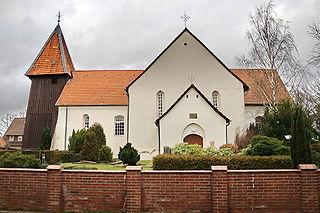13 Sights in Celle, Germany (with Map and Images)
Legend
Welcome to your journey through the most beautiful sights in Celle, Germany! Whether you want to discover the city's historical treasures or experience its modern highlights, you'll find everything your heart desires here. Be inspired by our selection and plan your unforgettable adventure in Celle. Dive into the diversity of this fascinating city and discover everything it has to offer.
Sightseeing Tours in Celle1. Bomann-Museum
The Bomann Museum is a museum for Lower Saxony folklore, regional and city history in Celle and one of the largest city museums in Lower Saxony. It was named after its founder and first museum director, Wilhelm Bomann.
2. Siedlung Blumläger Feld
The Blumläger Feld estate is a housing estate in Celle, Lower Saxony, Germany. It was planned by the architect Otto Haesler and completed in 1931. The complex consists of row buildings in steel frame construction with originally 147 inexpensively built micro-apartments.
3. Residenzmuseum im Celler Schloss

Residenzmuseum is the name given to the historic rooms in Celle Castle, which have been converted into a museum. Among other things, it shows the history of the Guelphs, the oldest surviving princely house in Europe, and the history of the Guelph residence from the Middle Ages to the present day. The management of the museum is the responsibility of the Celle Bomann Museum.
4. Christuskirche Westercelle
The Christuskirche is an ev.luth. Church in Westercelle in the city of Celle. The parish of Westercelle is part of the church district of Celle in the district of Lüneburg of the Evangelical Lutheran Church of Hanover.
5. Direktorenwohnhaus
The Director's Residence is a building in the style of Neues Bauen in Celle, Lower Saxony. It was built in 1930 according to the plans of the architect Otto Haesler as a residence for the director of the nearby Gymnasium Ernestinum. The building, which is now a listed building, has been used as an art gallery since 2006.
6. St. Georg
St. George's Church is an Evangelical Lutheran church in Celle, Lower Saxony, Germany. It owes its name to St. George, the dragon slayer. St. George is one of the 14 emergency helpers, he is the patron saint of various countries, noble families, cities and knightly orders.
7. Reformierte Kirche

The Reformed Church, the church building of the Evangelical Reformed congregation in Celle, Lower Saxony, belongs to the Evangelical Reformed Church. It was built in 1700 for the Huguenot community of the residential city and is the only surviving Huguenot church building in northwestern Germany.
8. Französischer Garten
The French Garden in Celle, in the German state of Lower Saxony, is a public park in the south of the historic old town or Altstadt. On both sides of a straight avenue of lime trees forming its east–west axis are flowerbeds, lawns, copses and a pond with a fountain. Its current appearance is no longer that of a true French Garden, but rather that of an English Garden. Laid out towards the end of the 17th century as a Baroque courtyard and leisure garden by French gardeners, Perronet and Dahuron, the gardens were given their present shape in the mid-19th century based on plans by the inspector of gardens, Schaumburg.
9. Celler Glockenspiel
The Celle Glockenspiel plays in Poststraße daily at 11 a.m., 1 p.m. and 5 p.m. Previously, the carillon created in 1973 at the house of the jeweller Schnell played on the market. After giving up the jewellery shop and selling the house in 2005, the city of Celle took over the carillon and installed it at its current location, where it has been ringing since 2010.
10. Burgwall
The circular rampart of Burg is a defensive work from the Early Middle Ages period located near the German town of Celle in Lower Saxony. The site, dating roughly to the 10th century and located in an inaccessible area of marsh by the River Fuhse, probably acted as a refuge for the local population. Today this 3-metre-high (9.8 ft) circular embankment belongs to one of the most important Early Middle Age historical monuments in Celle.
11. Sankt Ludwig
St. Ludwig is the main Catholic church in the town of Celle in the German state of Lower Saxony. It was consecrated in 1838 and was the third catholic parish church of the new diocese of Hildesheim which was authorised by papal bull and was outside of the former bishopric of Hildesheim and Archbishopric of Mainz. It followed in the footsteps of the first two churches: St Clemens in Hanover and St Michael in Göttingen. Its jurisdiction extends as far as the North Sea coast.
12. Gertrudenkirche

The Evangelical Lutheran Gertrude Church stands on the church cemetery of Altencelle, a district of the town of Celle in the district of Celle in Lower Saxony. The parish belongs to the church district of Celle in the district of Lüneburg of the Evangelical Lutheran Church of Hanover.
13. Schlosstheater Celle

The Castle Theatre in Celle is the court theatre which was established between 1670 and 1674/75 on the initiative of the opera lover, George William (1624-1705), Prince of Lüneburg from the House of Brunswick and Lüneburg, as part of the refurbishment and baroque restyling of Celle Castle. This baroque theatre, which fell into disuse and neglect for a while, was comprehensively renovated in 1935 with a horseshoe-shaped auditorium in the Italian style and is one of the oldest theatre buildings in Europe.
Share
How likely are you to recommend us?
Disclaimer Please be aware of your surroundings and do not enter private property. We are not liable for any damages that occur during the tours.








